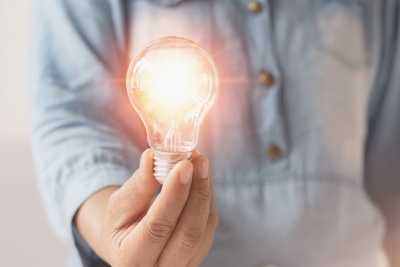
Thomas Edison had discovered in his experiments that there were certain bodies through which electric power flowed more easily. He called these good conductors and other bodies that resisted the flow of electric power he called bad conductors. When electricity tried to travel along a bad conductor the latter would resist so much that it glowed until became white-hot.
A carbon filament, for example, gave out a good deal of light; but the light did not last very long because the carbon would soon burn itself up as it was in contact with the oxygen in the air.
Edison then carried out an experiment inside a glass bulb from which he had removed all the air. This time the light of the glowing filament lasted much longer and the fist electric light bulb was born.
Carbon filaments have now been replaced by tungsten wire as its high melting point, low rate of evaporation and low electrical consumption make it most suitable for use in light bulbs. A further improvement has been the introduction of an inert gas in to the bulb. This was at first nitrogen but is now a mixture of 88 per cent argon and 12 per cent nitrogen.
Picture Credit : Google
